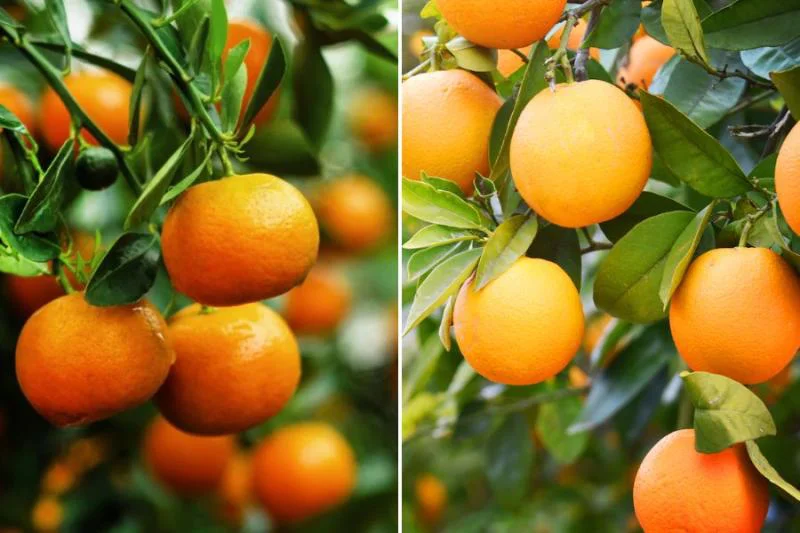Oranges and tangerines are examples of citrus fruits, and they mostly get confused with one another. Although tangerines and oranges look alike and are related, they are different fruits with some significant differences. They are made up of various nutrients, are sweet in flavour, and are commonly reduced in calories.
What is a Tangerines?
Tangerines are members of the citrus family. Usually, they are labelled as mandarins, mainly in the U.S. Tangerines are subgroups of mandarins that have a reddish-orange and a bright colour. Palatka in Florida was where tangerines were first grown in the 1800s. They got the name tangerine since they were imported via the city of Tangier in Mexico. The prime time of tangerines is from October through January.
What is an Orange?
Orange has its origin in Asia. Presently, large quantities of oranges are produced in Florida and Sao Paulo in Brazil. Oranges are of the citrus family. However, oranges are hybrids of two fruit types: mandarin and pomelo. Oranges are of different types and are usually segmented into four stages with identifying qualities. There are common or round oranges that are mostly used to produce juice. The navel orange is the most regular and common type of orange. The blood and pigmented orange contain a high concentration of an anthocyanin-actant pigment. This orange has dark red flesh. The sweet or acidless orange has low levels of acid in its content. Due to its content, it is mostly eaten and not used in making juice. This orange season differs because of its variety. Although, most of the oranges go into their prime from November to March.
Difference Between Tangerine and Orange
Tangerines are under the Mandarin subgroup, while oranges are hybrids of the pomelo and the Mandarin fruits. Regarding origination, oranges originated in Asia, while tangerines originated in Florida. A significant difference between tangerines and oranges is their size. Oranges, though, come in different sizes which are slightly different, mostly because of the variety. Although, oranges grow to a large size than tangerines. Sometimes tangerines are called baby oranges because of their small nature. Tangerines look flat and commonly less rounded, making them look like a sized pocket snack. They are very soft when perfectly ripe, while oranges are strong and weighty when it’s ripe.
Most oranges and tangerines have seeds and are sometimes seedless, depending on the type. Oranges and tangerines have different colours. Naturally, oranges are yellow; only the blood orange has a dark red colour. Tangerines look similar to some oranges’ colour; they are naturally reddish than the orange. In terms of flavours, tangerines and oranges are very different, and it also depends mostly on the difference between each fruit. Oranges can be sweet or tart, the same with tangerines. However, some Tangerines are sweeter and less tart than oranges. Tangerines also possess a strong flavour than oranges.
A significant difference between tangerines and oranges is the rinds. Truly, tangerines and oranges possess thin skin, although the orange skin is tighter and is often tougher to peel than the tangerines. The tangerines have loose and thin skin, which makes them very easy to peel. When intending to eat either tangerines or oranges, it’s easy to peel the skin and eat it. Tangerines are usually used as a quick snack, mostly when on the go. They are also added to salads. When one chooses the right tangerines, one looks out for the deep, colourful, and soft ones. Tangerines are a good source of vitamin A, while oranges are high in vitamin c and fibre. Consuming oranges assists in preventing calcium oxalate and uric acid, which leads to kidney stones. Oranges and tangerines are a high fibre sources and relatively low in carbohydrates.







